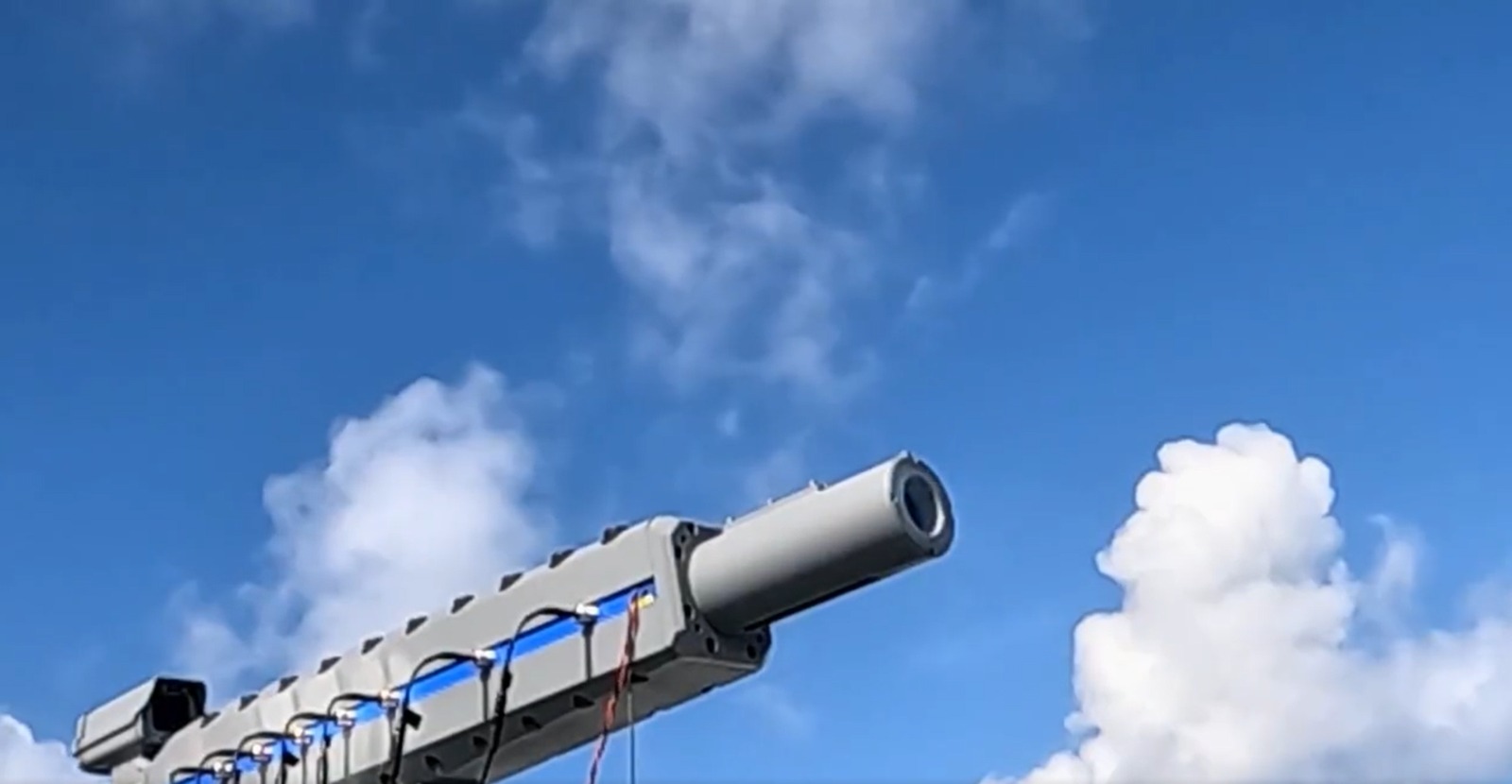Chinese naval researchers have reportedly overcome technical problems with hypersonic speed ‘smart kinetic energy shells’ fired from an electromagnetic rail gun.
Radio-electronic communications with the round suffer due to the high speeds and stress on its body. The US abandoned one such project three years ago.
Fired from an electromagnetic rail gun, the round flies between Mach 5 to Mach 7 (or five to seven times the speed of sound) but cannot receive satellite navigation signals at high speeds.
This is possible because of plasma shields and the extreme heat formed around its body during high speed.
Moreover, the tremendous pressure during flight at such speeds also harms and damages the electronics inside, making it a regular unguided shell. This can also cause the round to steer out of control wildly.
The technology, if operational, can redefine naval warfare, putting American warships at greater risk and giving Chinese commanders another weapon in their arsenal besides the diverse range of ballistic and anti-ship missiles.
Chinese Achievement
A team led by Feng Junhong with the National Key Laboratory of Electromagnetic Energy at the Naval University of Engineering published a paper in the Journal of the Naval University of Engineering in November.
The team’s research resulted in the round receiving stable signals from the BeiDou satellite navigation system. It consistently adjusted its flight path, maintaining an error of less than 15 meters (49 feet) “until it hits its target.”
“Achieving such high accuracy at such high speeds is not easy, as the shell can travel 2,500 meters (8,200 feet) per second,” the report added.
The Chinese scientists developed a unique “antenna” that can resist intense electromagnetic radiation and receive clear signals from the BeiDou constellation’s military frequency band.
The BeiDou receiver can also endure a force exceeding 25,000 times that of Earth’s gravity. Also, Chinese scientists developed a “cost-effective, mass-produced aerogel as a thermal barrier to counter the intense heat the shell generates during flight.”
The team also developed a “straightforward yet potent algorithm” to address further navigation satellite communication interruptions occurring from the shell’s “whirling” and “erratic” sway, significantly when altering course in varying air densities.
PR Stunt?
Railguns, which generate electromagnetic fields to move metallic objects, are also considered cost-effective since they eliminate gunpowder, chemicals, or rocket fuels.
However, an operational and functioning system has yet to be inducted into service by any military, with demonstrated extensive testing during exercises and at least a few units to show that it can achieve some level of mass production. The same can be said about the Chinese system, which, albeit possibly true, is yet to be fielded.
The report could also be a public relations exercise as a part of the Great Power Contest between the two countries, where Beijing portrays itself as a comparable technological and scientific powerhouse.
The US’s Abandoned Project
The US Navy first introduced the concept of a ‘dream shell’ in 2012, which, after being fired from electromagnetic rail guns (or coil guns), would navigate at Mach 5, guided by SatNav signals.
Planning to develop and test-fire the shell within five years, research was still ongoing up to 2017. However, by 2021, the US had “abandoned” the program. It redirected the funding towards hypersonic missiles, directed energy weapons (DEW), and electronic warfare (EW) systems.
Military and naval warfare analyst Bryan Clark from the Hudson Institute said the US spent US$500 million on the program over a decade. The biggest drawback was the system’s limited range – 110 miles (177 km) – clocked during testing.
“A Navy vessel could not employ the gun without putting itself within range of a barrage of enemy missiles. And its usefulness for missile defense was also limited by range and rate of fire,” Clark said.

The high electricity current and magnetic stress also frequently damaged the parallel conductors. Barrels of regular guns, however, have to be replaced or refurbished only after 600 rounds.
The US Navy first planned to deploy the electromagnetic railgun system on the USS Lyndon B. Johnson, a Zumwalt-class warship. That plan was canceled, and the USN pursued another failed option, the Advanced Gun System (AGS).
Designed as long-range offshore fire support for a potential US Marines’ amphibious landing, the stealthy Mark 51 155-mm/62-caliber AGSs were supposed to be the most significant caliber of offshore naval gunfire support aboard a US warship. However, their ammunition magazines and automated loading were incompatible to fire US Army and NATO-standard 155-mm howitzer shells.
The USN scrapped the AGS, too, and pursued an offshoot of the railgun project – a hypervelocity special GPS Long-Range Land Attack Projectiles (LRLAP). However, each round cost around US$800,000, mainly because the Zumwalt fleet acquisition was reduced to three from 32. The Zumwalt project has been infamously troubled with massive cost overruns and technical snags.
The AGS turrets were removed and are expected to be replaced by two tubes firing the Conventional Prompt Strike (CPS) hypersonic missiles. The railgun would have otherwise been powered by the 78 megawatts of electricity the Zumwalts’ massive marine turbines generate through a highly sophisticated Integrated Power Management System (IMPS).
- The author can be reached at satamp@gmail.com
- Follow EurAsian Times on Google News




